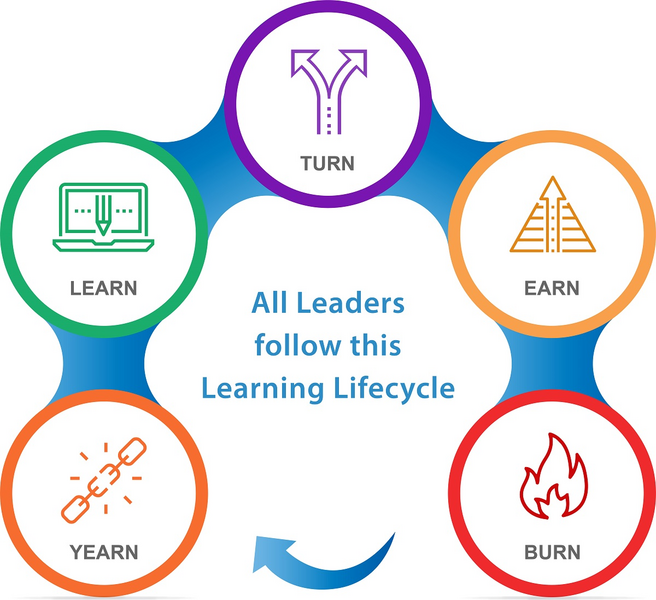ATD Blog
The Learning Life Cycle Creates a Pathway to Leadership
Wed Sep 27 2017

Daniel Pink, bestselling author of Drive, A Whole New Mind, and To Sell Is Human has said, “Human beings have an inherent tendency to seek out novelty and challenges, to extend and exercise their capacities, to explore, and to learn.”
After 35 years of experience including hands-on career counseling, executive mentoring, and high-level training in the IT and IT Infrastructure Library spaces, I’ve seen various leadership initiatives repeatedly lead to unsatisfactory results. Working with numerous leadership experts and training specialists, our team at Omnikron Systems has developed the Learning Lifecycle for leaders, which in turn follows a natural progression of leadership training methodologies that we call the Leadership Elevation Framework.
The five-part Leadership Learning Lifecycle supports leaders and their desire to learn. It enables them to analyze their own strengths, areas of improvement and knowledge gaps, while doing the same for those they lead. Let’s take a closer look at each phase.

Yearn
The lifecycle starts with the Yearn phase. At this stage, leaders yearn to accomplish more, solve problems, and fill knowledge gaps. In other words, leaders are not comfortable sitting back and accepting the status quo. During this phase, it’s also up to leaders to strike the “yearn” spark in their people. Interestingly enough, my real-world observations have shown that a large majority of people in today’s business population do not even make it to this stage.
Learn
After identifying the problems, gaps, or challenges they need to address, leaders are ready to learn—and this part of the lifecycle is always exciting and stimulating. During the Learn phase, leaders gain skills and knowledge, as well as badges, certification, and pride in their (and their teams’) accomplishments. Problem solving, decision making, negotiation, and change management skills and expertise are just some of the areas leaders master during this stage.
Turn
“Turn” refers to that point at which a challenge or leadership issue reaches its natural turning point. This is when things start to get a little tougher. A critical component of the Turn phase is the leader’s role as champion. The newly developed skills, tools, and strategies mastered during the Learn phase will enable leaders to reach back and pull their teams smoothly through the turn.
Earn
When leaders and their teams successfully make the turn and hang tough to solve problems, overcome challenges, or accomplish difficult goals, the payoff is what they “earn.” At first, the Earn phase refers to monetary gains, but leaders and their teams who reach this level of accomplishment also earn credibility, confidence, and competence. This stage is a representation of the energy, effort, and time they have dedicated to learning. But if not managed, it can also create an elitist, as well as stagnant and stale, mindset. Recognizing and overcoming this potential problem brings true leaders to the beginning of the Burn phase.
Burn
Organizations tend to lose another percentage of their leaders during the Burn phase of the lifecycle. That’s because people tend to become complacent, settled, and comfortable after they achieve their goals and the high energy and intensity of the previous cycles has dissipated. Leaders in the midst of the Burn phase must recognize that even though it’s more comfortable to stay in a perpetual Earn phase, they must actively burn off the status quo (such as a degree, position, promotion, or fame) and prepare for a new stage of yearning.
Indeed, the Burn phase is an important part of the lifecycle, as it pushes people to let go of old victories and accomplishments in preparation for new challenges and learning opportunities. People do not progress naturally from Earn to Yearn, there always needs to be a Burn phase.
The cycle can start again as leaders yearn to find solutions, learn new skills, and follow the rest of the pathway to mastery and team building. What’s more, it’s important that leaders recognize which cycle they are in at any given time, so that they can calibrate their workforces and employ different motivational measures.
You've Reached ATD Member-only Content
Become an ATD member to continue
Already a member?Sign In
